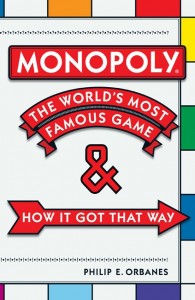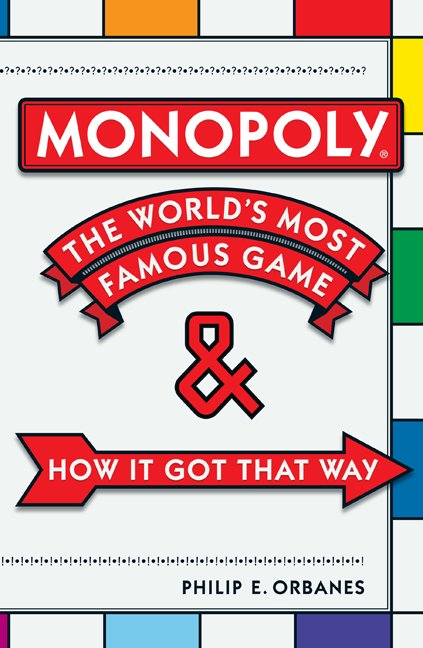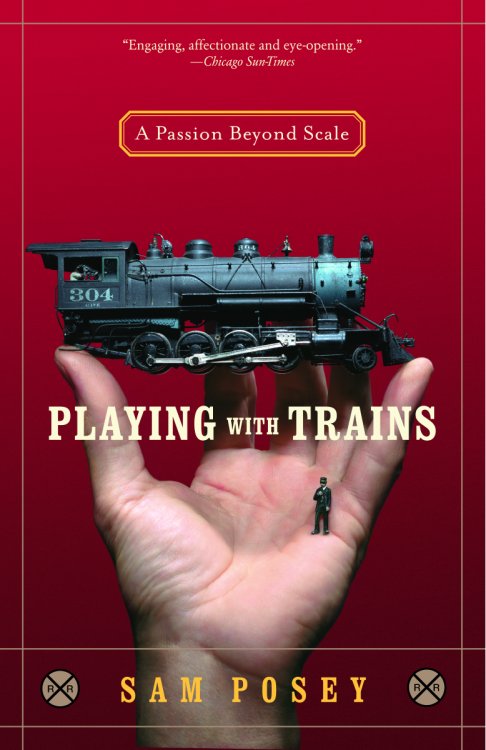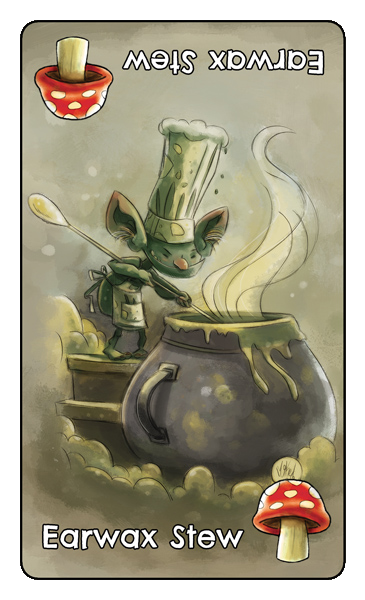Monopoly: The World’s Most Famous Game & How It Got That Way by Philip E. Orbanes
 Monopoly: The World’s Most Famous Game & How it Got That Way is aptly named. Author and Monopolyphile Philip E. Orbanes traces the roots of Monopoly from Elizabeth Magie Phillips’ Landlord Game in 1903, following its course up to 2006 when the book was published by Da Capo Press. Like most middle-class Americans, I’ve played dozens of games of Monopoly in my life and have even won a few. I have to confess that once I became aware of role-playing games and board games like Axis & Allies and Heroquest, I mostly put Monopoly aside and scorned it, but Orbanes’ writing makes me rethink my anti-Monopoly stance and I now want to try playing a few games of it competitively. Other than knowing its playing spaces and basic rules which have become engrained in Western culture (Get Out of Jail Free Card, Do Not Pass Go, Community Chest), I only knew that Parker Brothers was Monopoly’s manufacturer. The last time I “played” Monopoly involved McDonald’s playing pieces for the fast food giant’s annual promotion, so even learning that Monopoly’s playing spaces are named after real streets and neighborhoods in Atlantic City was quite a revelation for me.
Monopoly: The World’s Most Famous Game & How it Got That Way is aptly named. Author and Monopolyphile Philip E. Orbanes traces the roots of Monopoly from Elizabeth Magie Phillips’ Landlord Game in 1903, following its course up to 2006 when the book was published by Da Capo Press. Like most middle-class Americans, I’ve played dozens of games of Monopoly in my life and have even won a few. I have to confess that once I became aware of role-playing games and board games like Axis & Allies and Heroquest, I mostly put Monopoly aside and scorned it, but Orbanes’ writing makes me rethink my anti-Monopoly stance and I now want to try playing a few games of it competitively. Other than knowing its playing spaces and basic rules which have become engrained in Western culture (Get Out of Jail Free Card, Do Not Pass Go, Community Chest), I only knew that Parker Brothers was Monopoly’s manufacturer. The last time I “played” Monopoly involved McDonald’s playing pieces for the fast food giant’s annual promotion, so even learning that Monopoly’s playing spaces are named after real streets and neighborhoods in Atlantic City was quite a revelation for me.
Besides learning that basic Monopoly fact, I was also pleasantly surprised to find so much American and world history in the history of a single board game. Orbanes explores the presidential policies and the underlying economies of the years during Monopoly’s development, mostly glossing over the Kennedy-Johnson-Nixon administrations, but otherwise framing Monopoly’s growth with changes in our nation’s leaders. He also ties interest in Monopoly to the real world spread of monopolistic businesses, as well as the resulting antitrust actions, bankruptcies, and the move towards business conglomerates including Parker Brothers’ absorption by General Mills. IBM and AT&T also figure into Orbanes’ narrative. Monopoly’s role in WWII is particularly engrossing. British license-holder John Waddington Ltd., the publisher of card games, theater bills, and Monopoly, mastered the art of silk printing, with silk maps being useful to supply British pilots and ground forces with a stronger, more tear-resistant, lighter-weight map that didn’t rustle when unfolded. But Monopoly had a more direct link to the war effort according to Orbanes.The British intelligence service M19 had copies of the game distributed to Allies serving in Axis P.O.W. camps by the Red Cross. John Waddington Ltd. concealed escape tools like abrasive files and compasses embedded into the boards. Real world currency was hidden in the game’s playing money. Orbanes cites 35,000 Allied POWs who managed to escape Axis camps, but so highly classified was the secret operation that the actual number of POWs aided specifically by Monopoly is unknown.
While much of the book is a well-written history of the game, Orbanes also tackles the U.S., Canadian, and World Monopoly Championships, which he played a large part in organizing and judging himself. Orbanes joined Parker Brothers in 1979. At this point in Monopoly: The World’s Most Famous Game & How It Got That Way, his account of Parker Brothers’ practices becomes somewhat weaker rather than stronger. Orbanes provides little in the way of an insider’s insight into Parker Brother’s operations, much less any criticism of his employer. The entire book is similarly free of any criticism or negativity despite Monopoly’s involvement in lawsuits and disputes over who its actual creator was. The most critical reception that Monopoly gets in this history is a banning from the Nazis and other fascist governments and from the Communists during the Cold War. I have to imagine that some grognards or game critics might have taken issue with the company’s publication of Monopoly: The Mega Edition in 2006, in which the game’s spaces are expanded from 40 to 52 and a new movement mechanic is introduced, but Orbanes is silent on such a point. However one of the developments during his tenure that really stood out was the Franklin Mint’s $600 version of the game with over 100,000 copies sold! Do the math.
As for who actually created Monopoly, Orbanes attributes it to Elizabeth Magie Phillips, but the game went through many changes and iterations in between Phillips’ 1903 patent for the Landlord’s Game and its eventual publication in 1935 by Parker Brothers. From Phillips the basics of the game had spread among socialists, academics, and other fellow proponents of the single tax, which had originally been championed by Henry George in his 1879 book Progress and Poverty. As Orbanes narrates the spread of Monopoly through college campuses via handmade versions of Phillips’ game, he notes changes introduced. These are well-illustrated with graphical examples of the design changes over the years, early advertisements, and photo inserts of the game’s contributors, as well as an appendix of rules changes. These changes reached their culmination in the form of the unemployed Charles Darrow who first played the game in 1932 and who had 500 games produced in 1934, eventually selling his “rights” to Monopoly to Parker Brothers in 1935. The rules were then further distilled and formalized and the game of Monopoly was truly born, selling two million copies within two years during the height of the Great Depression.
If you’re looking for an answer on why Monopoly’s play money has its characteristic hues or why particular playing tokens were chosen, you’ll have to find them elsewhere. Orbanes does provide an excellent list of sources to find those answers though and I found his coverage of Monopoly collectors fascinating. Some collectors have over 400 different editions of the game or of the affinity editions, which are the Star Wars or NFL-themed versions replacing the familiar Board Walk and Park Place with each setting’s exclusive property. These collectors trawl eBay regularly looking for rare versions of the game. Orbanes is also no stranger to publishing previous works on Monopoly, having authored The Monopoly Companion (1999) and The Game Makers (2003). He lists the following among resources for fans of the game: World of Monopoly, Hasbro’s own Monopoly site, Tim Walsh’s The Playmakers, and Albert Veldhuis’s research.
I doubt I need to suggest that an existing fan of Monopoly should read Orbanes’ book, but whether you’re a board gamer or a role-player, I do suggest Monopoly: The World’s Most Famous Game & How it Got that Way. For any student who finds 20th century American history dull, especially its economic history, Orbanes’ take on Monopoly may be just the right enlightening avenue of approach.
Book cover copyright Da Capo Press, used with permission.


